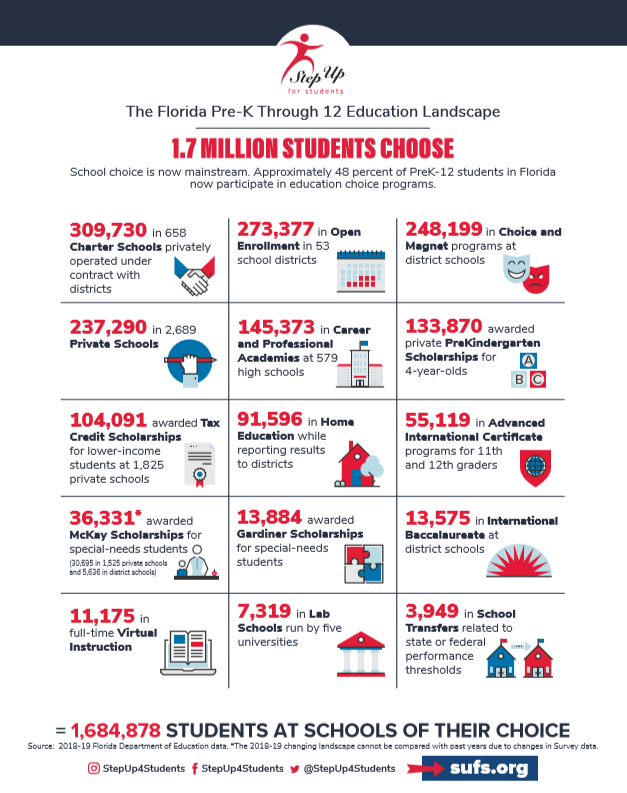 “There are more things in heaven and Earth, Horatio, than are dreamt of in a test score analysis …” Shakespeare by way of Ladner
“There are more things in heaven and Earth, Horatio, than are dreamt of in a test score analysis …” Shakespeare by way of Ladner
Learning to read proficiently and to understand math are two jolly important goals for our schools. They are by far, however, not the only goals.
Americans want students equipped with the academic knowledge and training for success, but they also aspire to broader types of success in the formation of character – the ability to exercise citizenship responsibly and to function as productive members of society, for instance.
A new study from Patrick Wolf, a professor of education policy at the University of Arkansas, and Corey DeAngelis of the Reason Foundation, published in the Journal of Private Enterprise, tracks long-term outcomes associated with the Milwaukee Parental Choice Program. The MPCP makes low-income students eligible to receive a voucher to attend a private school.
The authors carefully construct a comparison group and analyze the long-term social welfare effects on students who have been offered a voucher after controlling for a variety of student background characteristics. They found that exposure to the MPCP is associated with a reduction of about 53% in drug convictions, 86% in property damage convictions and 38% in paternity suits. Effects tend to be largest for males and students with lower levels of academic achievement at baseline.
So, in addition to academic benefits of the program, including a higher high school graduation rate, MPCP participants also have lower criminal conviction rates and less time in family court. The average MPCP voucher was worth $7,943 in 2018-19 while the average total spending per pupil in the Milwaukee Public Schools was $15,250 in 2017-18.
Just imagine what Milwaukee students might do if they got equitable funding, and if their families could utilize that funding for educational benefits beyond private school tuition. There would almost be enough money left over to pay for the sort of enrichment activities that the top decile American families pay for things like summer camps and tutors.

Step Up For Students' annual Changing Landscapes document reveals 48.2 percent of PreK-12 students attend a school of choice, up from 47.5 percent last year.
"Without change something sleeps inside us, and seldom awakens. The sleeper must awaken." Leto Atreides, Frank Herbert’s Dune
Studying the Florida Education Landscape document, released last week by Step Up For Students, has become one of my favorite January rituals along with playoff football and enjoying Arizona’s sunny, mild weather.
Serving just under a combined 150,000 students, Florida’s private choice programs would have ranked at approximately the sixth largest in the state by enrollment. The wide world of Florida K-12 choice, however, is much larger than just private choice programs. School districts offer an array of additional programs, Florida’s charter school sector continues to grow, and homeschooling is becoming more popular.

Open enrollment is an option that clearly has room to grow. The 273,377 figure cited in the document looks like – and is – a large number. But as the Reason Foundation’s Vittorio Nastasi notes, only 5,693 of these students transferred between districts, which means the vast majority of open enrollment is occurring within the same district rather than between districts.
This is due in part to Florida’s large system of county school districts. We would not expect to see many students travelling long distances from the center of one country to the periphery of another to attend school.
To put this into perspective, Arizona’s Scottsdale Unified School District takes in 4,000 open enrollment students in a district of approximately 22,000 students. Given that Florida’s public-school enrollment is nearing 3 million, 5,693 between-district transfers might seem like a good start – if it were occurring between Dade and Broward counties rather than statewide.
Bottom line: If too many of Florida’s school districts remain a sleeping giant of choice, other actors will step up to fill the gap. This is the tension in the system that’s needed to spur improvement and innovation and stave off stagnation. Every Florida student deserves the opportunity to attend a school that’s a good fit for his or her aspirations and needs. We have many miles to go before that will be the case.
I am more politically incorrect than your average guy, so when I heard President Obama call for universal pre-K for 4-year olds in the State of the Union, I cringed. With all the raucous enthusiasm ringing around this issue since the speech, adapting Warren Buffet’s investment approach to public policy might be wise: when everyone is bold, it’s time to be cautious.
In 2006, when I was with California Parents for Educational Choice, we were part of a coalition of organizations that defeated Rob Reiner’s ballot initiative to bring universal pre-K to the state. It was introduced to widespread public approval, but by Election Day garnered only 39 percent of the vote. The electorate came to understand three major elements they did not like:
* Expanding pre-K to everyone, including middle class and upper income families, is hugely expensive and precious little, if any evidence, supports much educational value added for the middle class and wealthy.
* The initiative vastly expanded the existing public school monopoly, which hardly has a resounding record of educational success, especially with poor and minority students. It also mandated collective bargaining, swelling the ranks and economic power of the California Teachers Association, an organization that systematically stands in the way of innovation and reform.
* The academic outcomes were questionable. A Reason Foundation analysis found from 1965 to 2005, 4-year old participation in preschool programs had grown nationwide from 16 percent to 66 percent, but we had virtually no evidence of increased student learning on the National Assessment of Educational Progress (NAEP) by fourth grade. Oklahoma, with a universal program since 1998, finished dead last on the 2005 NAEP, actually losing four points.
But that was close to seven years ago and admittedly, I haven’t followed the pre-K issue regularly. So I spent the last few days reviewing some studies and data. The key word in the Obama proposal is quality.
We likely can justify a highly targeted effort on kids in failed families or families that simply have no resources - financial, social, emotional, or cultural - to allow their children to mature and develop normally. But when Obama declares, “We know this works,” he overstates and simplifies our experience. (more…)